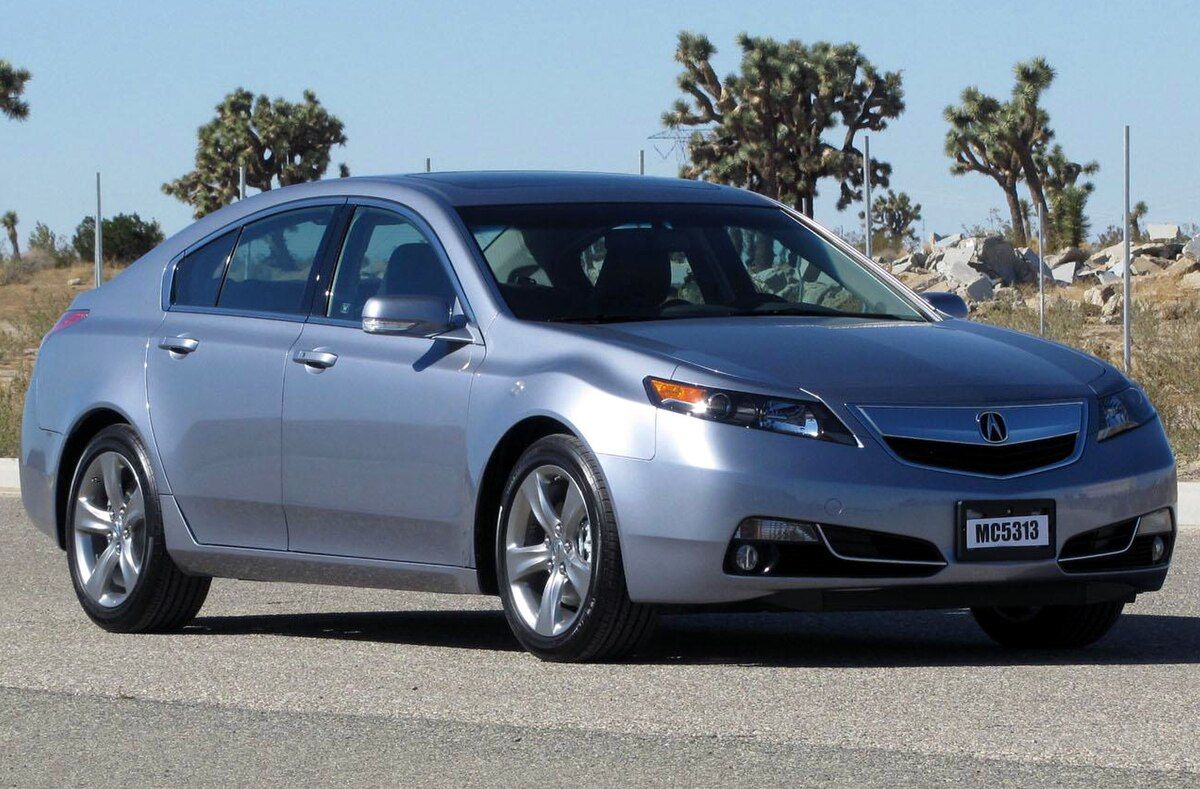
In an automotive landscape increasingly dominated by the towering presence of crossovers, SUVs, and pickups, the steadfast sedan often finds itself in the shadow, a victim of shifting consumer preferences. American automakers, in particular, have largely redirected their focus towards larger utility vehicles, leaving a dwindling number of domestic sedan options. Yet, for those who appreciate the driving dynamics, efficiency, and timeless appeal of a well-engineered four-door, the sedan segment remains a vibrant, albeit more specialized, corner of the market, particularly when it comes to long-term reliability.
Indeed, modern cars are built to endure. A recent study by S&P Global revealed that the average passenger car on American roads in 2024 is now 14 years old, a significant increase from the 11.5-year average a decade prior. This growing longevity means that vehicles are more capable than ever of racking up serious mileage. With the Department of Transportation (DOT) estimating the average American drives approximately 13,500 miles annually, a car reaching the current average age will have nearly 189,000 miles on its odometer. However, a select cadre of sedans stands out, consistently demonstrating the ability to push far beyond this benchmark, often without significant complaint.
Our deep dive into the sedans most likely to surpass the 200,000-mile mark is rooted in a rigorous methodology, combining predicted reliability scores from respected expert sources such as JD Power and Consumer Reports with real-world data from NHTSA owner complaints. Crucially, we’ve also weighed reports from countless owners on the lifetime mileage of previous generations, prioritizing models that have consistently proven their ability to achieve high mileage over multiple iterations. This isn’t just about initial quality; it’s about sustained durability, the kind that transforms a purchase into a lasting investment. Here, we present the first six contenders that exemplify this enduring automotive excellence.
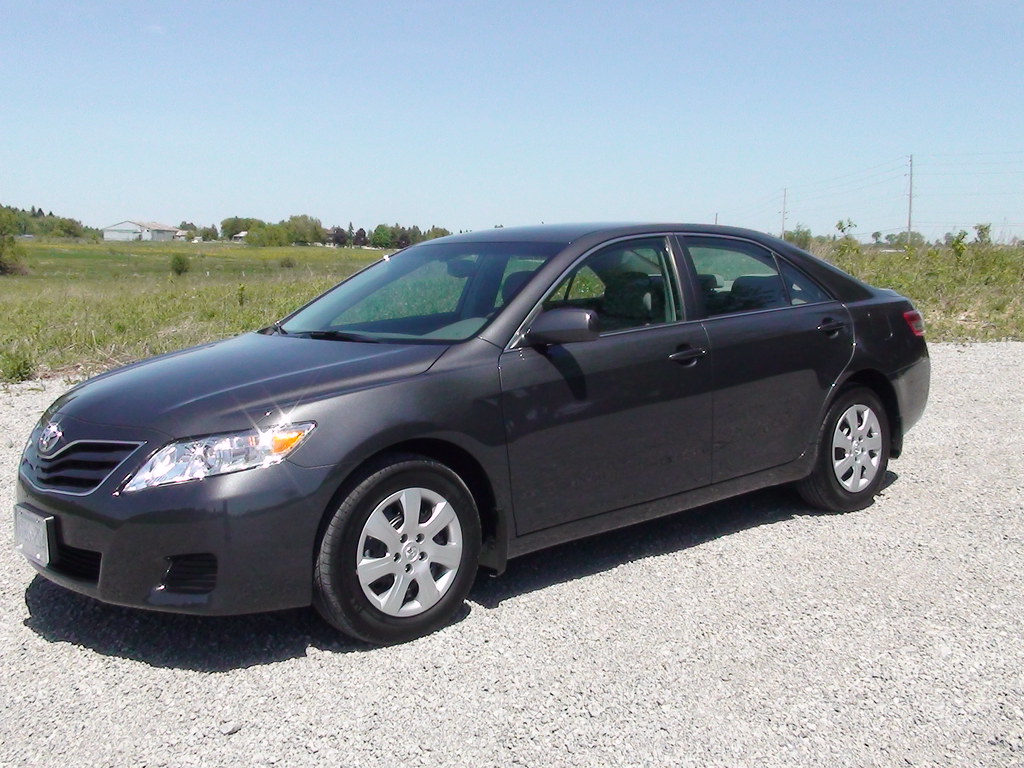
1. **Toyota Camry**The Toyota Camry stands as an undeniable icon in the realm of reliability, a nameplate synonymous with durability and a consistent ability to rack up impressive mileage. For the 2025 model year, this perennial favorite has received a significant refresh, boasting revised styling and, notably, a new standard hybrid engine. This evolution only solidifies its position as a long-term champion, promising not just continued dependability but also enhanced efficiency to keep running costs low over its extended lifespan.
In our mixed testing, while we didn’t quite hit the official 46 mpg combined efficiency rating, achieving 38 mpg is still a commendable figure, ensuring that fuel bills remain manageable even over hundreds of thousands of miles. The Camry’s power output varies slightly between front-wheel drive (225 horsepower) and all-wheel drive (232 horsepower) variants. Our all-wheel-drive tester delivered suitable potency for everyday driving, reinforcing its practical performance even if it wasn’t designed to be overtly sporty, a characteristic that often contributes to long-term mechanical stability.
There is nothing in the current data to suggest that the 2025 Camry will be any less reliable than its highly regarded predecessors, which are celebrated for their high mileage capabilities. An iSeeCars study impressively ranked the hybrid Camry among the top 20 longest-lasting vehicles on the market, while JD Power has awarded the current model year a high reliability rating. While the car has been subject to two minor recalls—one for a damaged second-row seatbelt and another for an incorrect load capacity sticker—these are issues that a dealer can easily remedy, and they are unlikely to impact the Camry’s fundamental, long-term robustness. Its consistent ability to have 1.5% of its models surpass the 200,000-mile threshold is a testament to its robust engineering.
Car Model Information: 2024 Toyota Camry LE
Name: Toyota Camry
Caption: 2018 Toyota Camry Ascent (ASV70, Australia)
Manufacturer: Toyota
Production: March 1982 – present
Aka: ubl
Class: ubl
Layout: ubl
Predecessor: ubl
Successor: Toyota Avensis (T250)
Categories: 1990s cars, 2000s cars, 2010s cars, 2020s cars, All-wheel-drive vehicles
Summary: The Toyota Camry (; Japanese: トヨタ・カムリ Toyota Kamuri) is an automobile sold internationally by the Japanese auto manufacturer Toyota since 1982, spanning multiple generations. Originally compact in size (narrow-body), the Camry has grown since the 1990s to fit the mid-size classification (wide-body)—although the two widths co-existed in that decade. Since the release of the wide-bodied versions, Camry has been extolled by Toyota as the firm’s second “world car” after the Corolla. As of 2022, the Camry is positioned above the Corolla and below the Avalon or Crown in several markets.
In Japan, the Camry was once exclusive to Toyota Corolla Store retail dealerships. Narrow-body cars also spawned a rebadged sibling in Japan, the Toyota Vista (トヨタ・ビスタ)—also introduced in 1982 and sold at Toyota Vista Store locations. Diesel fuel versions have previously retailed at Toyota Diesel Store. The Vista Ardeo was a wagon version of the Vista V50.
Get more information about: Toyota Camry
Buying a high-performing used car >>>
Brand: Toyota Model: Camry
Price: Not Priced Mileage: 36,770 mi.
Read more about: Your Definitive Guide to the Safest Family Vehicles of 2025: Top Models Earning Highest Safety Ratings
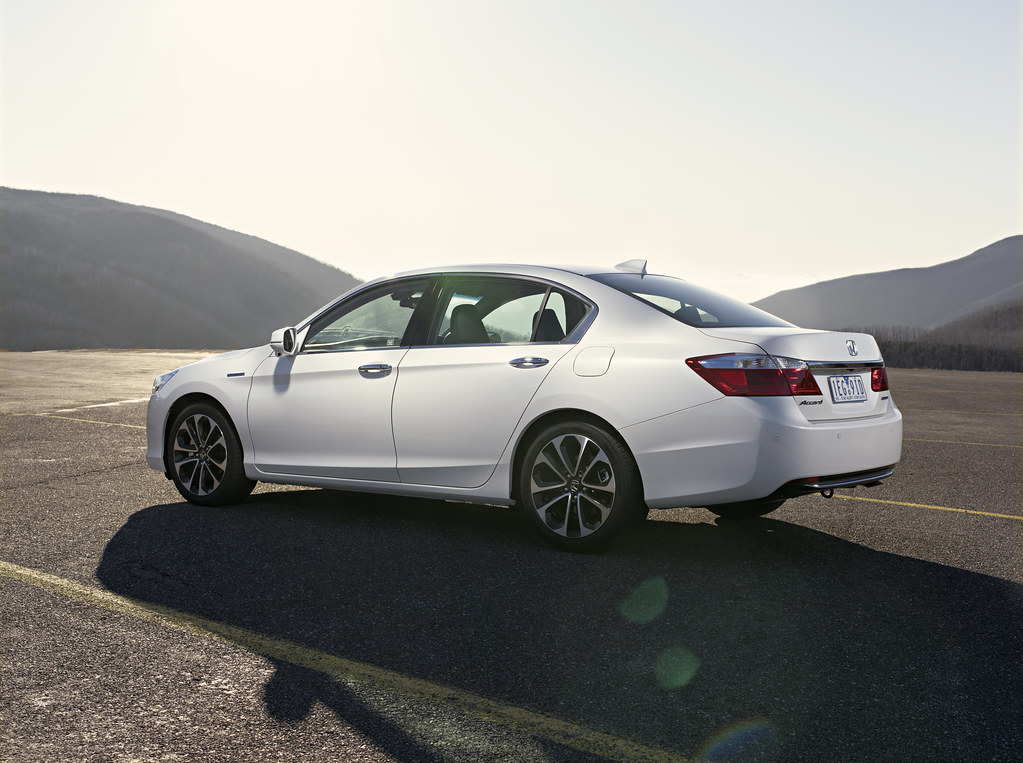
2. **Honda Accord**In a competitive segment, the Honda Accord consistently defies expectations, asserting its dominance as a midsize sedan capable of extraordinary longevity. Unlike many vehicles that might see their reliability wane over time, the Accord maintains a stellar reputation, significantly bolstered by the fact that it is made in America. This domestic manufacturing helps shield it from potential future price fluctuations due to tariffs, offering buyers a stable and reliable investment in more ways than one.
Consumer Reports, a trusted voice in vehicle evaluations, anticipates that the Accord will exhibit reliability superior to the average new car. This prediction is far from speculative; it’s backed by a wealth of anecdotal evidence from countless owners whose older Accords have comfortably surpassed mileage figures well beyond 250,000 miles. Such a robust track record makes the Accord a supremely sensible choice for anyone prioritizing endurance, even if it doesn’t always deliver the most exhilarating driving experience compared to some sportier rivals.
The 2025 model of the Accord is available with or without a hybrid powertrain, catering to a broad spectrum of preferences. Non-electrified models start at roughly $30,000, including the destination charge, while the most affordable hybrid variant begins around $35,000, with top-spec trims approaching just over $40,000. These options offer excellent value, especially considering the car’s proven ability to perform over the long haul. The top-tier Touring Hybrid trim further elevates the experience with premium features such as a Bose audio system, a head-up display, and a heated steering wheel, blending comfort with its inherent dependability. The impressive statistic that 2% of Accords surpass the 200,000-mile milestone solidifies its standing as a high-mileage champion.
Car Model Information: 2019 Honda Accord LX
Name: Honda Accord
Caption: 2023 Honda Accord LX (US)
Alt: Front three-quarter view of a front-engined four-door car.
Manufacturer: Honda
Production: 1976–present
Class: Compact car
BodyStyle: hatchback
Layout: Front-engine, front-wheel-drive layout
Predecessor: Honda 1300
Categories: 1980s cars, 1990s cars, 2000s cars, 2010s cars, 2020s cars
Summary: The Honda Accord (Japanese: ホンダ・アコード, Hepburn: Honda Akōdo; ), also known as the Honda Inspire (Japanese: ホンダ・インスパイア, Hepburn: Honda Insupaia) in Japan and China for certain generations, is a series of automobiles manufactured by Honda since 1976, best known for its four-door sedan variant, which has been one of the best-selling cars in the United States since 1989. The Accord nameplate has been applied to a variety of vehicles worldwide, including coupes, station wagons, hatchbacks and a Honda Crosstour crossover.
Get more information about: Honda Accord
Buying a high-performing used car >>>
Brand: Honda Model: Accord
Price: $16,987 Mileage: 126,610 mi.
Read more about: Your Definitive Guide to the Safest Family Vehicles of 2025: Top Models Earning Highest Safety Ratings

3. **Toyota Corolla**The Toyota Corolla has long been celebrated as the quintessential “cheap, reliable runabout,” and for excellent reasons. It continues to impress with its unwavering dependability, solidifying its status as one of the most accessible vehicles on the market that consistently proves its ability to go the distance. Older Corolla models have repeatedly demonstrated their capacity to accumulate mileage figures far exceeding the average new car, a feat largely attributed to proper and consistent maintenance, which is thankfully straightforward and affordable for this model.
One of the Corolla’s most compelling attributes is its price point, starting at under $25,000 in its base-spec form, making it an incredibly attractive option for budget-conscious buyers seeking long-term value. Even the top-spec Hybrid XLE variant manages to stay just below the $30,000 mark without additional options, offering an excellent blend of advanced technology and legendary reliability without breaking the bank. This affordability, coupled with its proven endurance, makes it a smart choice for first-time buyers or anyone seeking a dependable daily driver.
Despite its modest price, the Corolla does not compromise on critical areas, boasting top-tier safety ratings and remarkably low levels of owner complaints filed with the NHTSA. It also comes equipped with a generous suite of standard safety technologies, including lane departure warning and forward collision warning, enhancing peace of mind over its long life. Particularly in its hybrid configuration, the Corolla is exceptionally efficient, with official Toyota ratings of 53 mpg in the city and 46 mpg on the highway, ensuring low running costs and further reinforcing its appeal as a long-term companion. The current iteration maintains the competitive edge and reliability that has defined the Corolla for generations.
Car Model Information: 2010 Toyota Corolla LE
Name: Toyota Corolla
Caption: Twelfth generation model (2020, hatchback)
Manufacturer: Toyota
Aka: unbulleted list
Production: November 1966 – present
Class: unbulleted list
Predecessor: Toyota Publica
Categories: 1970s cars, 1980s cars, 1990s cars, 2000s cars, 2010s cars
Summary: The Toyota Corolla (Japanese: トヨタ・カローラ, Hepburn: Toyota Karōra) is a series of compact cars (formerly subcompact) manufactured and marketed globally by the Japanese automaker Toyota Motor Corporation. Introduced in 1966, the Corolla has been the world’s best-selling automobile of all time since 1997, when it surpassed the Volkswagen Beetle. Toyota reached the milestone of 50 million Corollas sold over twelve generations in 2021.
The name Corolla is part of Toyota’s naming tradition of using names derived from the Toyota Crown for sedans, with “corolla” Latin for “small crown”. The Corolla has always been exclusive in Japan to Toyota Corolla Store locations, and manufactured in Japan with a twin, called the Toyota Sprinter until 2000. From 2006 to 2018 in Japan and much of the world, and from 2018 to 2020 in Taiwan, the hatchback companion had been called the Toyota Auris.
Early models were mostly rear-wheel drive, while later models have been front-wheel drive. Four-wheel drive versions have also been produced, and it has undergone several major redesigns. The Corolla’s traditional competitors have been the Nissan Sunny, introduced the same year as the Corolla in Japan and the later Nissan Sentra, Subaru Leone, Honda Civic and Mitsubishi Lancer. The Corolla’s chassis designation code is “E”, as described in Toyota’s chassis and engine codes.
Get more information about: Toyota Corolla
Buying a high-performing used car >>>
Brand: Toyota Model: Corolla
Price: $10,687 Mileage: 79,185 mi.
Read more about: Your Definitive Guide to the Safest Family Vehicles of 2025: Top Models Earning Highest Safety Ratings

4. **Lexus ES**Sharing its fundamental platform with the highly reliable Toyota Camry, the Lexus ES elevates the ownership experience with a broader selection of engine choices and a decidedly plusher, more refined interior. This strategic foundation provides the ES with an inherent advantage in durability, while its luxury appointments position it as a sophisticated yet equally enduring alternative. The ES, recognized as the brand’s mid-range sedan, may not be a head-turner in terms of radical styling or aggressive driving dynamics, but its true strength lies in its profound reliability, which consistently outshines many of its rivals.
For 2025, the Lexus ES has garnered strong predicted reliability ratings from a multitude of industry-leading sources, a testament to its meticulous engineering and robust construction. The Lexus brand as a whole consistently achieves high scores in reliability assessments, reinforcing the ES’s position as a wise long-term investment. Buyers approaching the ES should temper expectations of a particularly sporty or exhilarating drive; indeed, numerous other luxury sedans are better tailored to enthusiasts who prioritize aggressive performance. Instead, the Lexus ES offers a compelling blend of supreme comfort and unwavering dependability, delivering the longevity inherent in a Camry with the refined ride quality and premium feel of a luxury vehicle.
The equipment levels in the ES, while adequate at lower trims, truly shine and become more generous as one ascends the trim hierarchy. For buyers operating within a tighter budget, a well-optioned Camry might present a more compelling value proposition, offering a similar core reliability without the premium price tag of a top-spec ES. Nevertheless, for those who seek the serene cabin, advanced features, and a tranquil driving experience paired with the peace of mind that comes from owning a car built to last, the Lexus ES stands as a paragon of reliability and longevity in the luxury sedan segment, consistently delivering both elegance and enduring performance for hundreds of thousands of miles.
Car Model Information: 2012 Lexus ES 350 Base
Name: Lexus ES
Caption: Lexus ES 350 (GSZ10)
Manufacturer: Toyota
Aka: unbulleted list
Production: June 1989 – present
Class: unbulleted list
BodyStyle: unbulleted list
Layout: unbulleted list
ModelYears: 1990–present
Categories: 1990s cars, 2000s cars, 2010s cars, 2020s cars, All-wheel-drive vehicles
Summary: The Lexus ES is a mid-size luxury sedan marketed since 1989 by Lexus, the luxury division of Toyota, across multiple generations, each offering V6 engines and a front-engine, front-wheel-drive layout. The first five generations of the ES used the Toyota Camry platform, while the latter generations are more closely related to both the Camry and the Avalon. Manual transmissions were offered until 1993, a lower-displacement inline-four engine became an option in Asian markets in 2010, and a gasoline-electric hybrid version was introduced in 2012. The ES was Lexus’s only front-wheel drive vehicle until 1998, when the related RX was introduced, and the sedan occupied the entry-level luxury car segment of the Lexus lineup in North America and other regions until the debut of the IS in 1999. The ES name stands for “Executive Sedan”. However, some Lexus importers use the name, “Elegant Sedan”.
Introduced in 1989, the first generation ES 250 was one of two vehicles in Lexus’s debut range, along with the LS 400. The second generation ES 300 debuted in 1991, followed by the third generation ES 300 in 1996, and the fourth generation ES 300/330 in 2001. The first- through fourth generation sedans shared body styling elements with Japan-market Toyota sedans, and a domestic market equivalent, the Toyota Windom (Japanese: トヨタ・ウィンダム, Toyota Windamu), was sold until the launch of the fifth generation ES in 2006. The word “Windom” is a combination of “win” and the suffix “dom” expresses a state of perpetual victory. The fifth generation ES used body styling marketed by Lexus as L-finesse and debuted in early 2006 as a 2007 model. The sixth generation ES debuted in the first half of 2012 as a 2013 model, and features increased cabin dimensions due to a longer wheelbase which is shared with the full-size XX40 series Avalon.
Lexus has positioned the ES in the comfort luxury segment, with an emphasis on interior amenities, quietness, and ride quality, in contrast with more firm-riding sport sedans. Buyers seeking more performance-focused models are targeted by the Lexus IS and rival makes, with such models offering a sportier drive with differently tuned suspensions. In Europe, Japan and other markets where it was not available until the seventh generation model, the GS sport sedans occupy the mid-size category in the Lexus lineup until it was cancelled August 2020. In the United States, the ES has been the best-selling Lexus sedan for over fifteen years.
Get more information about: Lexus ES
Buying a high-performing used car >>>
Brand: Lexus Model: ES
Price: $12,740 Mileage: 93,810 mi.
Read more about: Beyond the Odometer: 15 Legendary Engines That Defy Time, Powering On Strong Past 200,000 Miles and into Automotive Immortality
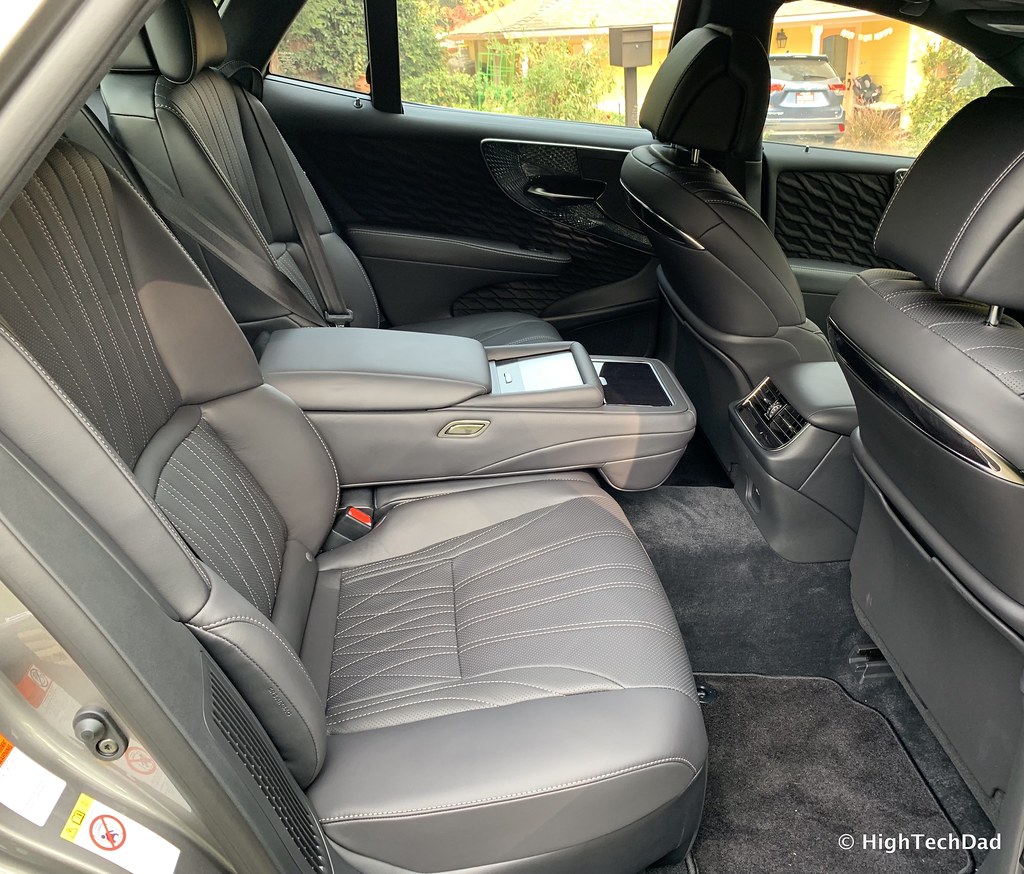
5. **Lexus LS**The Lexus LS occupies a unique and revered position in the automotive world, its reputation for extreme longevity cemented by legendary feats. Perhaps the most famous anecdote involves a 1990s example of the Lexus LS that, under the dedicated ownership of auto journalist Matt Farah, famously crossed the remarkable one-million-mile mark in 2019. While most drivers will never come close to such an astonishing figure, this extraordinary achievement serves as powerful evidence that 250,000 miles, or even significantly more, should be readily attainable for contemporary LS models that receive proper, diligent maintenance.
Reports of Lexus LS examples routinely exceeding 300,000 miles are commonplace within enthusiast communities and long-term ownership surveys. Critically, there is absolutely no indication or data to suggest that the latest generation of the LS will deviate from its forebears’ impressive track record of reliability. This continuity in engineering excellence ensures that the flagship Lexus sedan remains a beacon of enduring quality, even as it incorporates the latest advancements in luxury and technology. Its robust build, meticulous attention to detail, and a philosophy geared towards long-term ownership are deeply embedded in its design DNA.
Of course, the Lexus LS comes with a significant caveat that will undoubtedly be a dealbreaker for a substantial portion of potential buyers: its price. The base LS 500 starts at a formidable $81,685, and for those who opt for the advanced hybrid powertrain, that price escalates sharply to an imposing $116,560. This places the LS firmly out of reach for all but the most affluent automotive shoppers. However, for those with the financial wherewithal to justify the investment, very few, if any, other vehicles on the market can genuinely rival the LS’s unparalleled fusion of opulent luxury, serene comfort, and truly exceptional, proven long-term reliability. It’s a testament to engineering longevity at its most refined.
Car Model Information: 2008 Lexus LS 460 Base
Name: Lexus LS
Caption: 2019 Lexus LS 500 AWD (VXFA55, US)
Manufacturer: Toyota
Aka: Toyota Celsior (Japan, 1989–2006)
Production: May 1989 – present
ModelYears: 1990–present
Assembly: Tahara, Aichi
Class: Full-size,luxury car
BodyStyle: Sedan (automobile)
Layout: unbulleted list
Categories: 1990s cars, 2000s cars, 2010s cars, 2020s cars, All-wheel-drive vehicles
Summary: The Lexus LS (Japanese: レクサス・LS, Hepburn: Rekusasu LS) is a series of full-size luxury sedans that have served as the flagship model of Lexus, the luxury division of Toyota, since 1989. For the first four generations, all LS models featured V8 engines and were predominantly rear-wheel-drive. In the fourth generation, Lexus offered all-wheel-drive, hybrid, and long-wheelbase variants. The fifth generation changed to using a V6 engine with no V8 option, and only one length was offered.
As the first model developed by Lexus, the LS 400 debuted in January 1989 with the second generation debuting in November 1994. The LS 430 debuted in January 2000 and the LS 460/LS 460 L series in 2006. A domestic-market version of the LS 400 and LS 430, badged as the Toyota Celsior (Japanese: トヨタ・セルシオ, Hepburn: Toyota Serushio), was sold in Japan until the Lexus marque was introduced there in 2006. In 2006 (for the 2007 model year), the fourth generation LS 460 debuted the first production eight-speed automatic transmission and an automatic parking system. In 2007, V8 hybrid powertrains were introduced on the LS 600h/LS 600h L sedans.
Development of the LS began in 1983 as the F1 project, the code name for a secret flagship sedan. At the time, Toyota’s two existing flagship models were the Crown and Century models – both of which catered exclusively for the Japanese market and had little global appeal that could compete with international luxury brands such as Mercedes-Benz, BMW and Jaguar. The resulting sedan followed an extended five-year design process at a cost of over US$1 billion and premiered with a new V8 engine and numerous luxury features. The Lexus LS was intended from its inception for export markets, and the Lexus division was formed to market and service the vehicle internationally. The original LS 400 debuted to strong sales and was largely responsible for the successful launch of the Lexus marque.
Since the start of production, each generation of the Lexus LS has been manufactured in the Japanese city of Tahara, Aichi. The name “LS” stands for “Luxury Sedan”, although some Lexus importers have preferred to define it as “Luxury Saloon”. The name “Celsior” is taken from Latin word “celsus”, meaning “lofty” or “elevated”.
Get more information about: Lexus LS
Buying a high-performing used car >>>
Brand: Lexus Model: LS
Price: $11,924 Mileage: 144,661 mi.
Read more about: Beyond the Odometer: 15 Legendary Engines That Defy Time, Powering On Strong Past 200,000 Miles and into Automotive Immortality
6. **Mazda 3**For drivers who might not be entirely swayed by the understated practicality of a Toyota Corolla but still seek an equally affordable and reliable Japanese sedan, the Mazda 3 emerges as a compelling alternative. This sedan has steadily built a reputation for its engaging driving dynamics and a more premium feel than its price point might suggest, all while maintaining an impressive propensity for long-term endurance. With meticulous and consistent maintenance, owners frequently report that their Mazda 3s can comfortably achieve mileage well in excess of 200,000 miles, with those who primarily drive on highways often reaching significantly higher figures. Consequently, reaching 250,000 miles—or even pushing towards 300,000 miles—is well within the realm of possibility for this spirited compact.
The Mazda 3 also enjoys a high reliability score from Consumer Reports for the 2025 model year, underscoring its solid engineering and robust components. Performance enthusiasts will appreciate that, in its top-spec form, the Mazda 3 delivers a potent 250 horsepower from its turbocharged 2.5L engine, blending spirited acceleration with its inherent dependability. However, this top-tier trim commands a price tag of around $37,000, including the destination fee, which might be a stretch for some budgets. Fortunately, Mazda offers a range of trims catering to different financial considerations.
Drivers on a tighter budget can select from multiple sub-$30,000 trims further down the range, ensuring accessibility without a significant compromise on quality. The cheapest of these is the 2.5 S trim, which starts at approximately $25,000, including the destination fee. This variant still provides a respectable 191 horsepower from its naturally aspirated 2.5L engine, offering ample power for daily commuting and enjoyable drives. While it might forgo some of the advanced safety features and the moonroof found on pricier models, the core reliability and engaging character of the Mazda 3 remain intact, making it a strong contender for those seeking a long-lasting, enjoyable, and value-packed sedan.
Having explored the foundational reliability of our initial six contenders, we now pivot to a new set of sedans that, while sometimes flying under the radar or redefining their segments, unequivocally demonstrate the enduring quality required to push far past the 200,000-mile threshold. These vehicles continue our narrative of longevity, blending robust engineering with compelling value propositions and, in some cases, unexpected performance. Our rigorous methodology, combining expert predictions with real-world owner experiences, remains the compass guiding this comprehensive evaluation.
Car Model Information: 2016 Mazda CX-5 Grand Touring
Name: Mazda3
Manufacturer: Mazda
Aka: Mazda Axela (Japan and China, 2003–2019)
Production: 2003–present
Class: Compact car
BodyStyle: Sedan (automobile),hatchback
Layout: Front-engine, front-wheel-drive layout,Front-engine, four-wheel-drive layout
Predecessor: Mazda Familia
Categories: 2010s cars, 2020s cars, All Wikipedia articles written in American English, All articles needing rewrite, All articles with dead external links
Summary: The Mazda3 (known as the Mazda Axela (Japanese: マツダ・アクセラ, Hepburn: Matsuda Akusera) in China and Japan until 2019) is a compact car manufactured by Mazda since 2003 over four generations. The body styles have been a 5-door hatchback and 4-door sedan across all generations.
The first generation was produced in Japan from June 2003 until November 2008 and replaced the Familia (also known as the 323 or Protegé) as Mazda’s C-segment model. It was sold in North America from the 2004 model year until the 2009 model year. It was also produced in Colombia from 2004 until 2014, in Iran from 2006 until 2010, and in China from 2007 until 2013.
The second-generation Mazda3 for the 2009 model year was unveiled in late 2008, with the sedan premiering at the Los Angeles Auto Show and the hatchback at the Bologna Motor Show. For the 2012 model year, Mazda began offering the Mazda3 with their newly developed Skyactiv technology, including a more rigid body, a new direct-injection engine, and a new 6-speed transmission.
The third generation was introduced in mid-2013 as a 2014 model year. The third-generation model is the first Mazda3 to adopt the “Kodo” design language and a more complete Skyactiv range of technologies and the first to be made by Mazda independently.
The fourth-generation Mazda3 for the 2019 model year was unveiled in November 2018 at the Los Angeles Auto Show. For the 2019 model, the all-new Mazda3 is equipped with the updated Skyactiv technologies, including a spark-controlled compression ignition engine marketed as the Skyactiv-X.
A performance-oriented version of the Mazda3 was marketed until 2013 as the Mazdaspeed3 in North America, Mazdaspeed Axela in Japan, and the Mazda3 MPS in Europe and Australia.
The Mazda3 became one of Mazda’s fastest-selling vehicles, with cumulative sales in January 2019 of over 6 million units.
Get more information about: Mazda3
Buying a high-performing used car >>>
Brand: Mazda Model: 3
Price: $14,980 Mileage: 93,888 mi.
Read more about: Dream Drives: 15 Classic Cars That Should Absolutely Be Revived for Today’s Roads
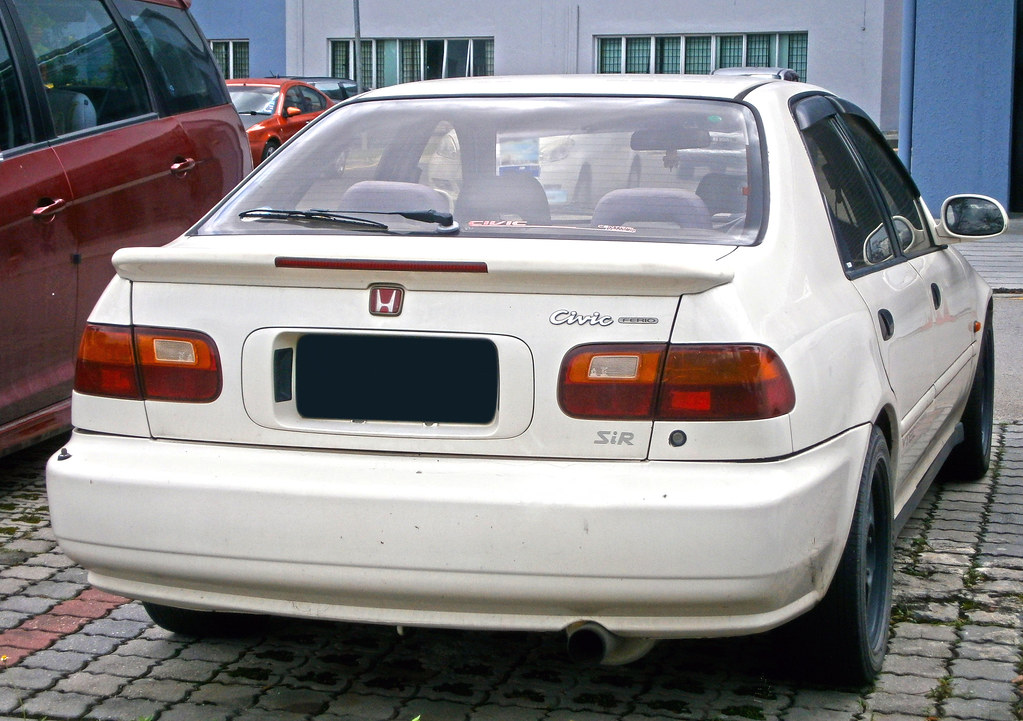
7. **Honda Civic**The Honda Civic has long been a bedrock of the compact car segment, consistently defying expectations for its size by delivering exceptional long-term reliability. Its omnipresence on American roads, with over 220,000 examples sold in the U.S. in 2024 alone, is a testament to its enduring appeal and, more critically, its proven longevity. Owners of previous generations frequently laud the Civic’s ability to rack up serious mileage, often with minimal fuss, a reputation that the 2025 model year is poised to uphold.
Indeed, the 2025 Civic sedan has already garnered a high predicted quality rating from JD Power, an authoritative benchmark for initial quality and anticipated durability. Furthermore, owner complaints logged with the NHTSA for the current model year remain remarkably low, reinforcing the perception of robust construction and dependable operation. These indicators collectively paint a picture of a vehicle meticulously engineered for the long haul, consistently delivering on Honda’s promise of reliability.
While the 2025 Civic has been subject to a couple of recall notices—one concerning a fuel pump and another related to the steering gearbox—these are issues that impact a range of Honda models. Crucially, assuming the necessary recall work is correctly executed by a dealership, there is no prevailing evidence to suggest that either of these minor campaigns will compromise the Civic’s fundamental long-term reliability. Its core engineering remains sound, ensuring that it continues to be one of the most affordable models in Honda’s lineup, with prices starting just over $25,000 for base trims and reaching approximately $33,000 for the top-spec model, representing an outstanding long-term value proposition.
Car Model Information: 2016 Honda Civic EX-L
Caption: 2024 Honda Civic liftback
Manufacturer: Honda
Aka: ubl
Production: 1972–present
Class: Subcompact car
BodyStyle: fastback,Sedan (automobile)
Layout: Front-engine, front-wheel-drive layout,Front-engine, four-wheel-drive layout
Predecessor: Honda N600,Honda Z600
Categories: 1980s cars, 1990s cars, 2000s cars, 2010s cars, 2020s cars
Summary: The Honda Civic (Japanese: ホンダ・シビック, Hepburn: Honda Shibikku) is a series of automobiles manufactured by Honda since 1972. As of 2023, the Civic is positioned between the Honda Fit/City and Honda Accord in Honda’s global passenger car line-up. It is one of the best-selling automobiles in history, with over 27 million units sold through 2021.
The first-generation Civic was introduced in July 1972 as a two-door fastback sedan, followed by a three-door hatchback that September. With a 1,169 cc transverse engine and front-wheel drive, the car provided good interior space despite its small overall dimensions. Initially gaining a reputation for being fuel-efficient, reliable and environmentally friendly, later iterations have become known for performance and sportiness, especially the Civic Si, SiR, and Type R versions. It is currently in its eleventh generation, which has been produced since 2021.
The Civic has often been rebadged for international markets, and it served as the basis for the Honda CR-X, the Honda CR-X del Sol, the Concerto, the first generation Prelude, the Civic Shuttle (which later became the Orthia) and the CR-V (which in turn was used as the basis for the Honda FR-V).
Get more information about: Honda Civic
Buying a high-performing used car >>>
Brand: Honda Model: Civic
Price: $14,685 Mileage: 148,116 mi.
Read more about: Your Definitive Guide to the Safest Family Vehicles of 2025: Top Models Earning Highest Safety Ratings
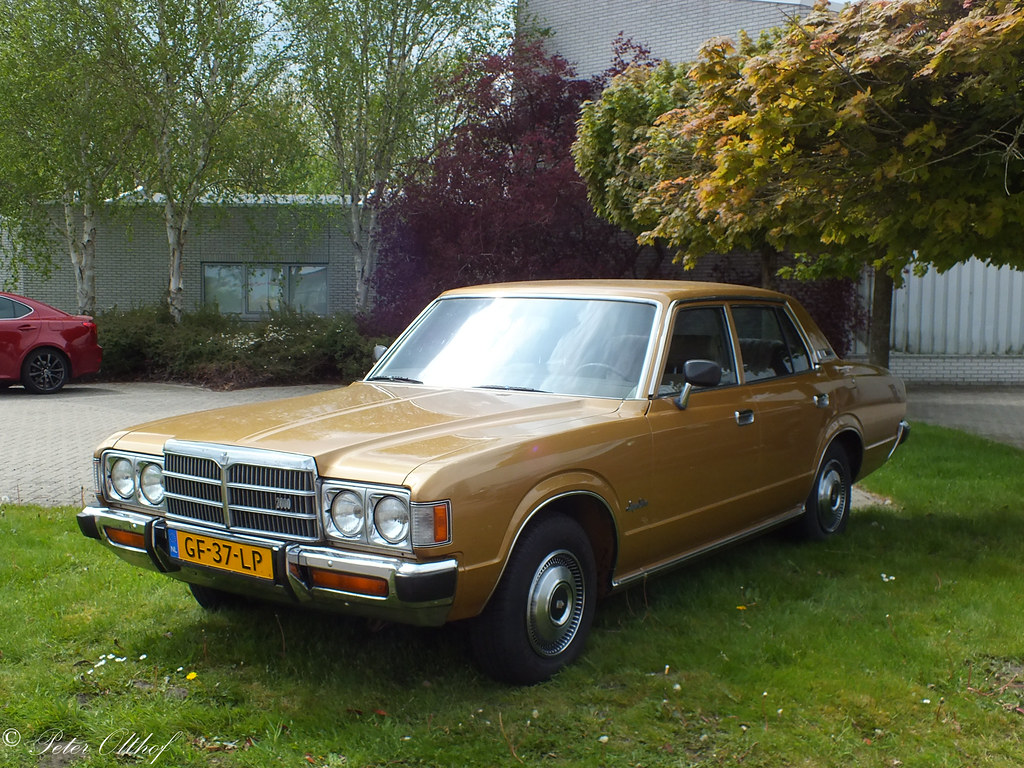
8. **Toyota Crown**The Toyota Crown, while perhaps not carrying the same immediate name recognition as some of its stablemates in the North American market, is far from a newcomer to the concept of automotive longevity. It has been a venerable staple in Toyota’s Japanese lineup for many decades, where its reputation for unwavering reliability is deeply ingrained. Reintroduced to North America for the 2023 model year, the Crown immediately made an impression, particularly with its refined ride quality and the potent output of its available Hybrid MAX powertrain.
For the 2025 model year, the Crown continues to receive consistently strong predicted reliability ratings from a host of industry sources. This high praise is not accidental; a significant factor contributing to its projected durability is its strategic sharing of key components, including its powertrain, with other well-established and notoriously dependable models within the broader Toyota range. This synergy leverages Toyota’s extensive experience in engineering vehicles for sustained performance, instilling confidence in the Crown’s long-term prospects.
The Crown presents a distinct proposition in the sedan segment, characterized by its slightly elevated ride height, which blurs the lines between a traditional sedan and a crossover. This unique stance, coupled with its attention-grabbing aesthetics, differentiates it from other high-mileage heroes. While the Hybrid MAX powertrain, lauded for its spirited performance, might not achieve the absolute highest efficiency figures compared to the base-spec setup, the overall package of the Crown still resonates with us. Its unwavering reliability, a hallmark inherited from Toyota’s core philosophy, ensures it stands as a confident choice for drivers seeking enduring quality in a uniquely styled package.
Car Model Information: 2023 Toyota Crown Limited
Name: Toyota Crown
Caption: 2024 Toyota Crown Sedan Z FCEV (KZSM30, Japan)
Manufacturer: Toyota
Production: 1955–present
Assembly: unbulleted list
Class: Full-size car
BodyStyle: unbulleted list
Layout: unbulleted list
Related: unbulleted list
Predecessor: Toyota RH
Successor: unbulleted list
Categories: 1960s cars, 1970s cars, 1980s cars, 1990s cars, 2000s cars
Summary: The Toyota Crown (Japanese: トヨタ・クラウン, Hepburn: Toyota Kuraun) is an automobile which has been produced by Toyota in Japan since 1955. It is primarily a line of executive cars that is marketed as an upscale offering in the Toyota lineup.
In North America, the first through fourth generations were offered from 1958 through 1972, being replaced by the Corona Mark II. The Crown nameplate returned to the North American market in 2022, when the sixteenth-generation model was released. The Crown has also been partially succeeded in export markets by its closely related sibling, the Lexus GS, which since its debut in 1991 as the Toyota Aristo has always shared the Crown’s platform and powertrain options. Later models of the GS and Crown have taken on a very strong aesthetic kinship through shared design cues.
In 2022, Toyota unveiled four different Crown models to replace the fifteenth-generation model. The first model that is available is the Crossover-type Crown. The remaining three models: Sedan, Sport, and Estate, were released between 2023 and 2024 respectively, and are available in hybrid, plug-in hybrid, and fuel cell powertrains depending on the model.
Get more information about: Toyota Crown
Buying a high-performing used car >>>
Brand: Toyota Model: Crown
Price: $39,988 Mileage: 16,934 mi.
Read more about: Dream Drives: 15 Classic Cars That Should Absolutely Be Revived for Today’s Roads
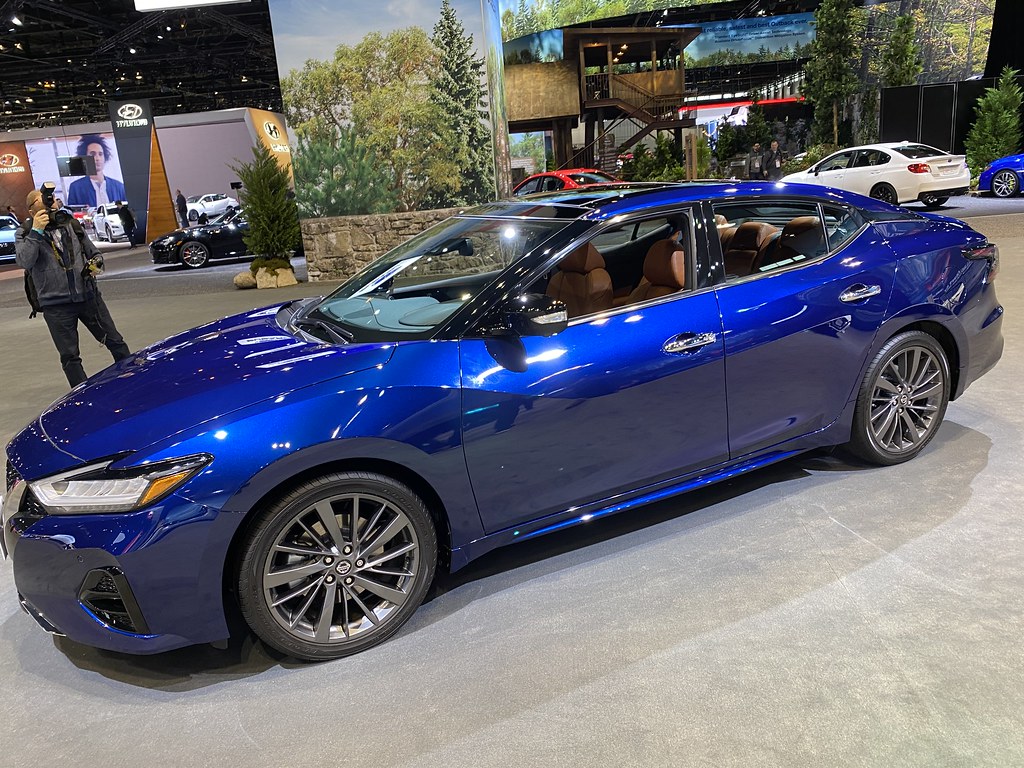
9. **Nissan Maxima**In a segment often dominated by flashier rivals, the Nissan Maxima has quietly cultivated a formidable reputation for enduring quality, solidifying its place among sedans poised to surpass significant mileage markers. While its sibling, the Altima, frequently captures more of the mainstream spotlight, the Maxima’s robust engineering and steadfast construction truly underscore its capability for long-term ownership. This “sturdy sedan,” as it’s often described, proves that sustained performance doesn’t always necessitate a groundbreaking design but rather a commitment to fundamental reliability.
Empirical data backs the Maxima’s credentials in the longevity stakes. A notable 1.3% of Maxima models have demonstrably cruised past the 200,000-mile threshold, an impressive feat that speaks volumes about their inherent durability. This figure, derived from real-world usage patterns, places the Maxima firmly within the elite cadre of vehicles designed to withstand the rigors of extensive mileage. It suggests that with nothing more than regular upkeep and diligent maintenance, owners can reasonably expect their Maximas to serve faithfully for hundreds of thousands of miles.
The Maxima’s appeal as a long-distance champion is rooted in a balance of comfortable cruising and dependable mechanicals. It might not always be the most aggressively performance-oriented option in its class, but its strength lies in its predictable and reliable operation, qualities that are paramount for high-mileage accumulation. For drivers prioritizing a well-built, comfortable, and proven sedan that can withstand the test of time, the Nissan Maxima emerges as a compelling and understated choice, proving that reliability doesn’t always need to shout to be recognized.
Car Model Information: 2018 Nissan Maxima 3.5 SV
Manufacturer: Nissan
Aka: Datsun Maxima (1981–1984)
Production: 1980–2023
ModelYears: 1981–2023
Class: Mid-size (1981–2003),Full-size (2004–2023)
Layout: Front-engine, rear-wheel-drive
Predecessor: Datsun 810
Caption: 2021 Nissan Maxima SV (A36; US)
Categories: 1990s cars, 2000s cars, 2010s cars, 2020s cars, All articles with dead external links
Summary: The Nissan Maxima is a five-passenger, front-engine, mid-size car that was manufactured and marketed by Nissan as Nissan’s flagship sedan primarily in North America, the Middle East, South Korea, and China — across eight generations. The Maxima debuted for model year 1982 as the Datsun Maxima, replacing the Datsun 810.
The Maxima was marketed as an upscale alternative to the Altima and prior to 1993, the Stanza, distinguished by features such as a premium interior and V6 engine. Most Maximas were built in Oppama, Japan, until North American assembly began in Smyrna, Tennessee, for the 2004 model year.
For the US and Canada, Nissan ended production of the Maxima in July 2023.
Outside North America, the Maxima nameplate has also been applied to variants or trim levels of several other models.
Get more information about: Nissan Maxima
Buying a high-performing used car >>>
Brand: Nissan Model: Maxima
Price: $13,995 Mileage: 113,619 mi.
Read more about: Buyer’s Remorse on Full Display: 15 Vehicles Motorists Swear They’d ‘Unchoose’ if They Could, According to Driver Confessions
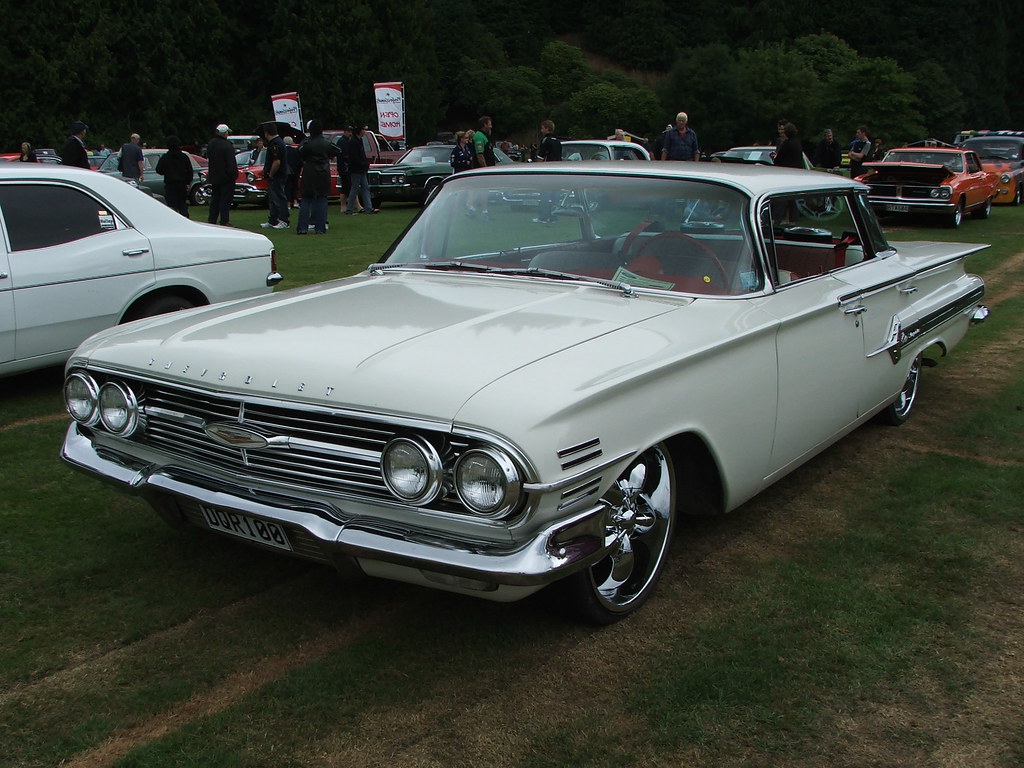
10. **Chevrolet Impala**The Chevrolet Impala, an enduring icon of American automotive manufacturing, demonstrates that exceptional longevity is not solely the domain of foreign automakers. This classic American sedan has consistently proven its mettle on the open road, echoing the impressive endurance statistics often associated with top-tier Japanese rivals like the Toyota Camry. With a notable 1.5% of Impala models successfully reaching and surpassing the 200,000-mile mark, it stands as a powerful testament to robust American engineering and manufacturing capability.
What underpins the Impala’s impressive reliability is a combination of its sturdy build and its straightforward, proven mechanicals. While perhaps not as flashy as some contemporary offerings, the Impala’s strength lies in its foundational durability, making it a trusted option for countless drivers who prioritize a vehicle built to last. Its blend of generous interior space, comfortable ride quality, and dependable performance has long made it a favored choice for both daily commutes and extended road trips, contributing to its high mileage accumulation.
For those seeking an American-made vehicle that embodies the spirit of longevity, the Impala is a strong contender. It offers a compelling alternative to foreign brands without compromising on the promise of a long-lasting ownership experience. Its ability to consistently deliver comfort and reliability over hundreds of thousands of miles ensures that it continues to earn its place among the elite group of cars that are truly built for the long haul, making it a smart and resilient investment for discerning drivers.
Car Model Information: 1966 Chevrolet Impala Base
Name: Chevrolet Impala
Caption: Fourth-generation model (1967)
Manufacturer: Chevrolet
Production: 1957–1985,1994–1996,1999–2020
ModelYears: 1958–1985,1994–1996,2000–2020
Predecessor: Chevrolet Bel Air,Chevrolet Lumina#Second generation (1995–2001)
Successor: Chevrolet SS,Chevrolet Caprice
Platform: GM B platform,GM W platform,GM W platform (GMX211) (2005–2013),GM Epsilon platform#Epsilon II
Class: Full-size car,Mid-size car
Layout: Front-engine, rear-wheel-drive layout,Front-engine, front-wheel-drive layout
Categories: 1960s cars, 1970s cars, 1980s cars, 1990s cars, 2000s cars
Summary: The Chevrolet Impala () is a full-size car that was built by Chevrolet for model years 1958 to 1985, 1994 to 1996, and 2000 to 2020. The Impala was Chevrolet’s popular flagship passenger car and was among the better-selling American-made automobiles in the United States.
For its debut in 1958, the Impala was distinguished from other models by its symmetrical triple taillights. The Chevrolet Caprice was introduced as a top-line Impala Sport Sedan for model year 1965, later becoming a separate series positioned above the Impala in 1966, which, in turn, remained above the Chevrolet Bel Air and the Chevrolet Biscayne. The Impala continued as Chevrolet’s most popular full-sized model through the mid-1980s. Between 1994 and 1996, the Impala was revised as a 5.7-liter V8–powered version of the Chevrolet Caprice Classic sedan.
In 2000, the Impala was reintroduced again as a mainstream front-wheel drive car. In February 2014, the 2014 Impala ranked No. 1 among Affordable Large Cars in U.S. News & World Report’s rankings. When the 10th generation of the Impala was introduced for the 2014 model year, the 9th generation was rebadged as the Impala Limited and sold only to fleet customers through 2016. During that time, both versions were sold in the United States and Canada. The 10th-generation Impala was also sold in the Middle East and South Korea.
Get more information about: Chevrolet Impala
Buying a high-performing used car >>>
Brand: Chevrolet Model: Impala
Price: $39,991 Mileage: 95,805 mi.
Read more about: Dream Drives: 15 Classic Cars That Should Absolutely Be Revived for Today’s Roads
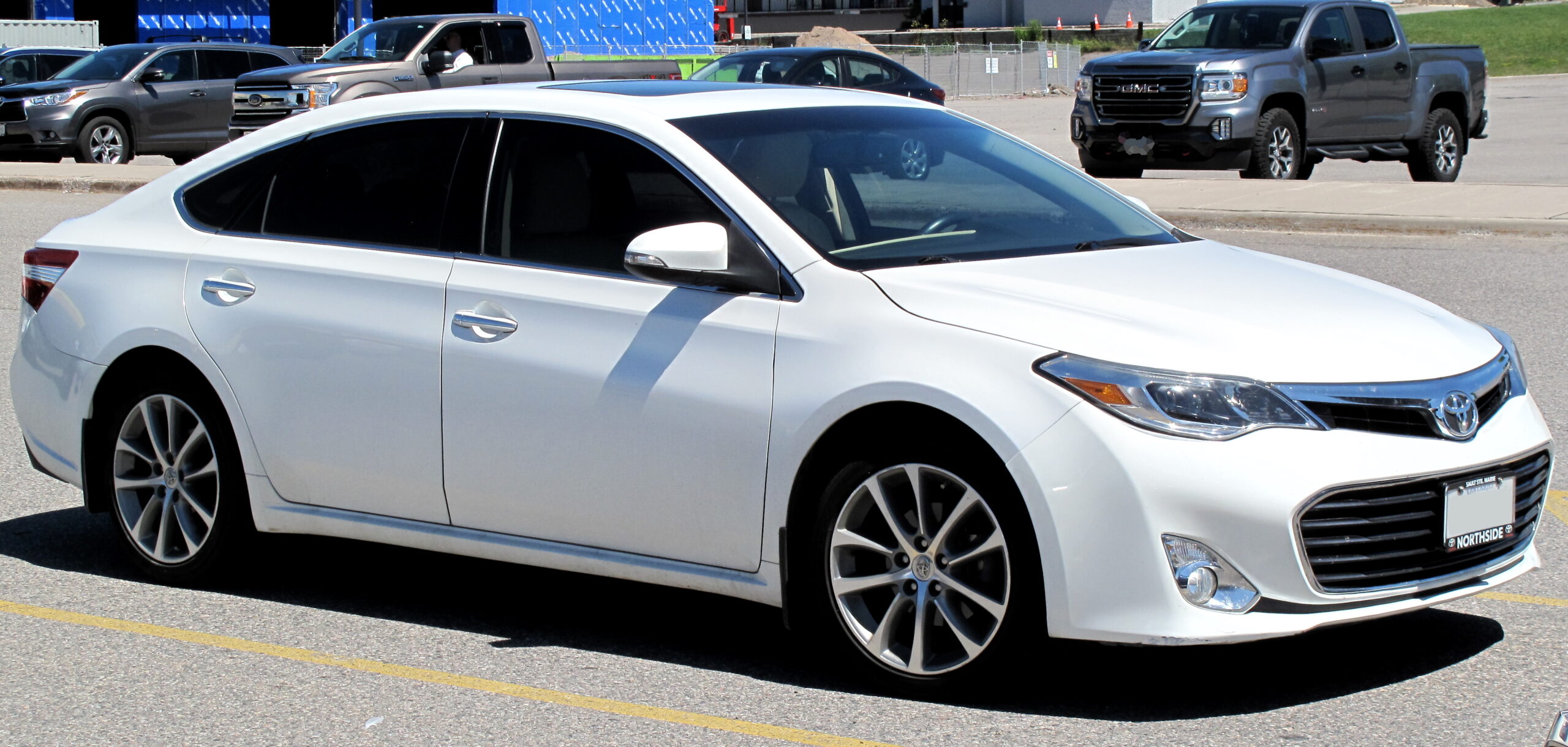
11. **Toyota Avalon**As Toyota’s flagship large sedan, the Avalon has carved out a unique and highly respected niche for itself as the quintessential “most durable large sedan” on the market. Its prowess in the realm of longevity is undeniable, with an astonishing 2.4% of Avalon models achieving the significant milestone of 200,000 miles or more. This exceptional statistic speaks volumes about Toyota’s unwavering commitment to engineering excellence and relentless pursuit of durability across its entire lineup, but particularly in its premium sedan offerings.
The Avalon’s impressive longevity is intrinsically linked to its renowned reliability and consistently high levels of owner satisfaction. Drivers frequently laud the Avalon for its smooth, comfortable ride, quiet cabin, and the peace of mind that comes from owning a vehicle that consistently performs without complaint over extended periods. This combination of upscale comfort and bulletproof dependability positions the Avalon as a standout choice for those who demand both luxury and a truly long-lasting investment from their vehicle.
In a market where many large sedans have either been discontinued or struggle to compete on a purely longevity-focused metric, the Avalon has not only survived but thrived. Its ability to maintain a top position among sedans for endurance proves that size and sophistication do not inherently preclude exceptional reliability. For individuals seeking a spacious, refined, and above all, enduring sedan that delivers lasting value and unwavering performance for hundreds of thousands of miles, the Toyota Avalon remains an unmatched proposition.
Car Model Information: 2016 Toyota Avalon XLE
Name: Toyota Avalon
Caption: Toyota Avalon XSE (GSX50, Canada)
Manufacturer: Toyota
Aka: Toyota Pronard (Japan, 2000–2004)
Production: 1994–present
ModelYears: 1995–2022 (US)
Class: Full-size car
BodyStyle: Sedan (automobile)
Layout: unbulleted list
Predecessor: unbulleted list
Successor: unbulleted list
Categories: 2000s cars, 2010s cars, 2020s cars, All-wheel-drive vehicles, All Wikipedia articles written in American English
Summary: The Toyota Avalon (Japanese: トヨタ・アバロン, Hepburn: Toyota Abaron) is a full-size sedan manufactured by Toyota, as its largest front-wheel drive sedan; also its flagship in the United States, Canada, China and the Middle East. The Avalon was also manufactured in Australia from April 2000 until June 2005, when it was replaced in November 2006 by the Aurion. The first production Avalon was manufactured in September 1994 at the TMMK assembly line in Georgetown, Kentucky, where subsequent generations have been manufactured.
Toyota marketed the front-drive Avalon as a replacement for its rear-drive Cressida, a model discontinued for the American market in 1992. The Cressida was an upper-level, mid-size, rear-wheel drive sedan. The Avalon has at times overlapped Toyota’s models using the same platform, including the Camry V6 and the Lexus ES. The third-generation and subsequent generations was distinguished by offering extra legroom due to its extended-length chassis. From 2013, the Lexus ES was moved to the extended platform to match the Avalon.
As of 2013, the Avalon was sold in the United States, Canada, China, South Korea and the Middle East. It was discontinued in the United States in 2022.
Avalon is a legendary island of the Arthurian legend, fitting it in with Toyota’s tradition of naming their sedans after variants of the word for “crown” in various languages (Crown, Corona, Camry, Corolla), types of crowns (Tiara), or other aspects of royalty (Scepter).
Get more information about: Toyota Avalon
Buying a high-performing used car >>>
Brand: Toyota Model: Avalon
Price: $15,950 Mileage: 106,793 mi.
Read more about: Your Definitive Guide to the Safest Family Vehicles of 2025: Top Models Earning Highest Safety Ratings
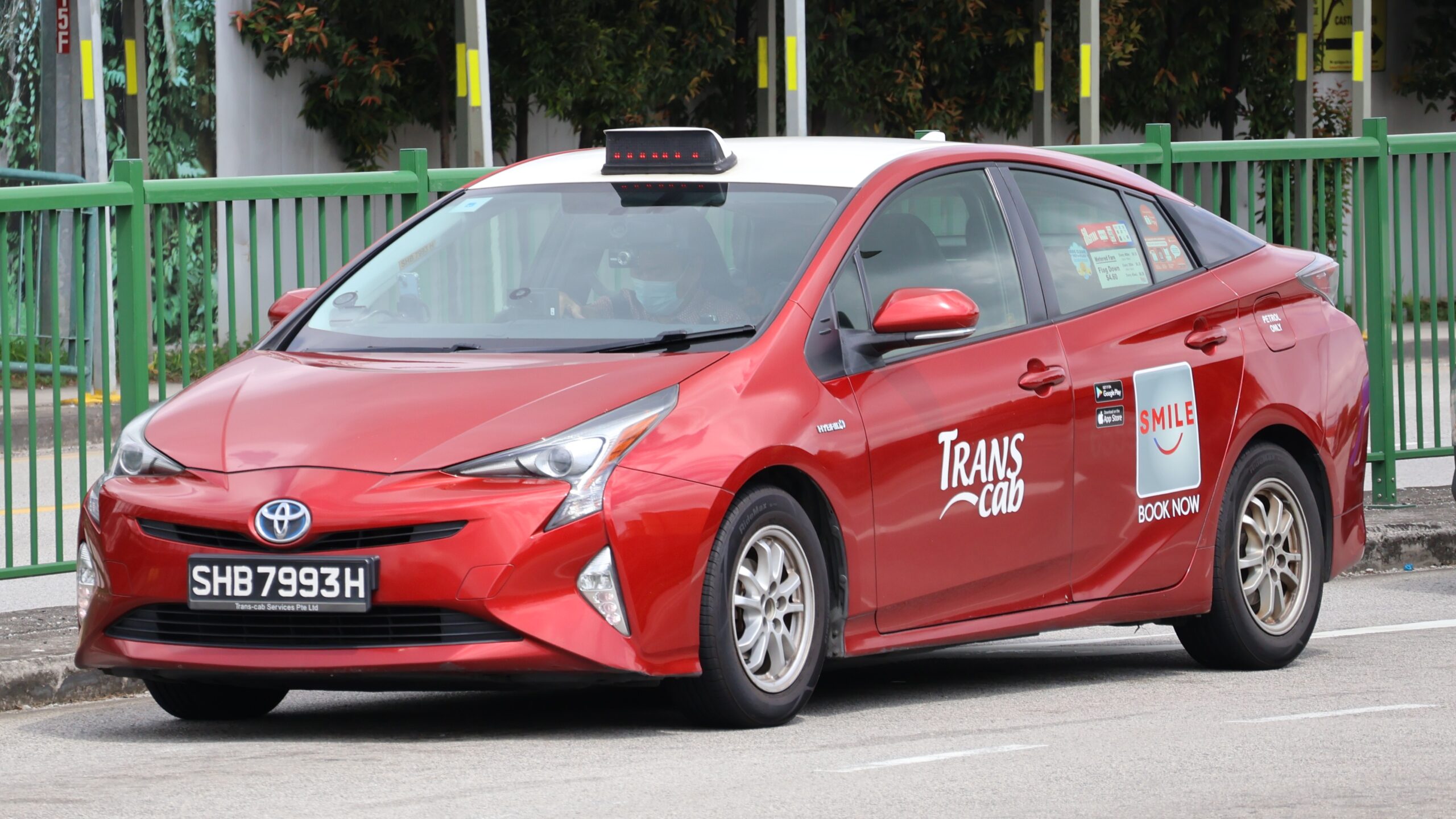
12. **Toyota Prius**Breaking new ground and proving that efficiency and longevity can harmoniously coexist, the Toyota Prius stands as a pioneer on our list, marking the advent of hybrid technology in the high-mileage club. Often celebrated for its remarkable fuel efficiency and eco-friendly credentials, the Prius equally distinguishes itself through an often-understated, yet profoundly impressive, capacity for long-term durability. It unequivocally demonstrates that its innovative hybrid powertrain is not only sustainable but also built to endure the rigors of extensive daily driving.
The empirical evidence for the Prius’s longevity is compelling: a significant 1.3% of Prius models have demonstrably cruised past the 200,000-mile mark. This achievement is particularly noteworthy for a vehicle that pioneered hybrid technology in the mainstream, dispelling any lingering doubts about the long-term robustness of its complex drivetrain and battery systems. Toyota’s meticulous engineering and the proven reliability of its hybrid synergy drive system are key factors in this exceptional endurance, making it a beacon for sustainable long-distance travel.
Beyond its impressive mileage capabilities, the Prius is also recognized for its straightforward and affordable maintenance, which further contributes to its overall long-term value. While its form factor has sometimes been described as a hatchback, its functionality and market positioning often place it alongside traditional sedans, particularly for those prioritizing economical, reliable, and enduring transportation. For drivers seeking a vehicle that not only sips fuel but also promises to go the distance with unwavering dependability, the Toyota Prius offers an intelligent and proven path to hundreds of thousands of miles.
Car Model Information: 2018 Toyota Prius Four
Name: Toyota Prius
Caption: Fifth generation Prius (XW60)
Manufacturer: Toyota
Production: December 1997 – present
ModelYears: 2001–present (US)
Class: ubl
BodyStyle: unbulleted list
Layout: unbulleted list
Sp: uk
Categories: 2000s cars, 2010s cars, 2020s cars, All-wheel-drive vehicles, All Wikipedia articles in need of updating
Summary: The Toyota Prius ( PREE-əss) (Japanese: トヨタ・プリウス, Hepburn: Toyota Puriusu) is a car produced by Toyota since 1997 over five generations. The Prius has a hybrid drivetrain, which combines an internal combustion engine and an electric motor. Initially offered as a subcompact four-door saloon, it has been produced only as a compact five-door liftback since 2003.
The Prius was developed by Toyota to be the “car for the 21st century”; it was the first mass-produced hybrid vehicle, first going on sale in Japan in 1997 at all four Toyota Japan dealership chains, and subsequently introduced worldwide in 2000.
In 2011, Toyota expanded the Prius family to include the Prius v, an MPV, and the Prius c, a subcompact hatchback. The production version of the Prius plug-in hybrid was released in 2012. The second generation of the plug-in variant, the Prius Prime, was released in the U.S. in November 2016. The Prius family totaled global cumulative sales of 6.1 million units in January 2017, representing 61% of the 10 million hybrids sold worldwide by Toyota since 1997. Toyota sells the Prius in over 90 markets, with Japan and the United States being its largest markets.
Get more information about: Toyota Prius
Buying a high-performing used car >>>
Brand: Toyota Model: Prius
Price: $18,999 Mileage: 84,118 mi.
Read more about: The Roadblocks Ahead: 10 Sedans Plagued by Crippling Mechanical Issues and Reliability Headaches
As our journey through the most resilient sedans concludes, it’s abundantly clear that while the automotive landscape continually shifts, the core principles of exceptional engineering, meticulous build quality, and a relentless pursuit of durability remain timeless. These twelve sedans, spanning a spectrum of price points and performance envelopes, stand as unwavering proof that the four-door stalwart is far from obsolete. They represent not just a purchase, but a sound investment in sustained performance and peace of mind, demonstrating that with the right choice and diligent care, your next sedan can indeed be a faithful companion for the long, winding road ahead, well past that formidable 200,000-mile benchmark.



